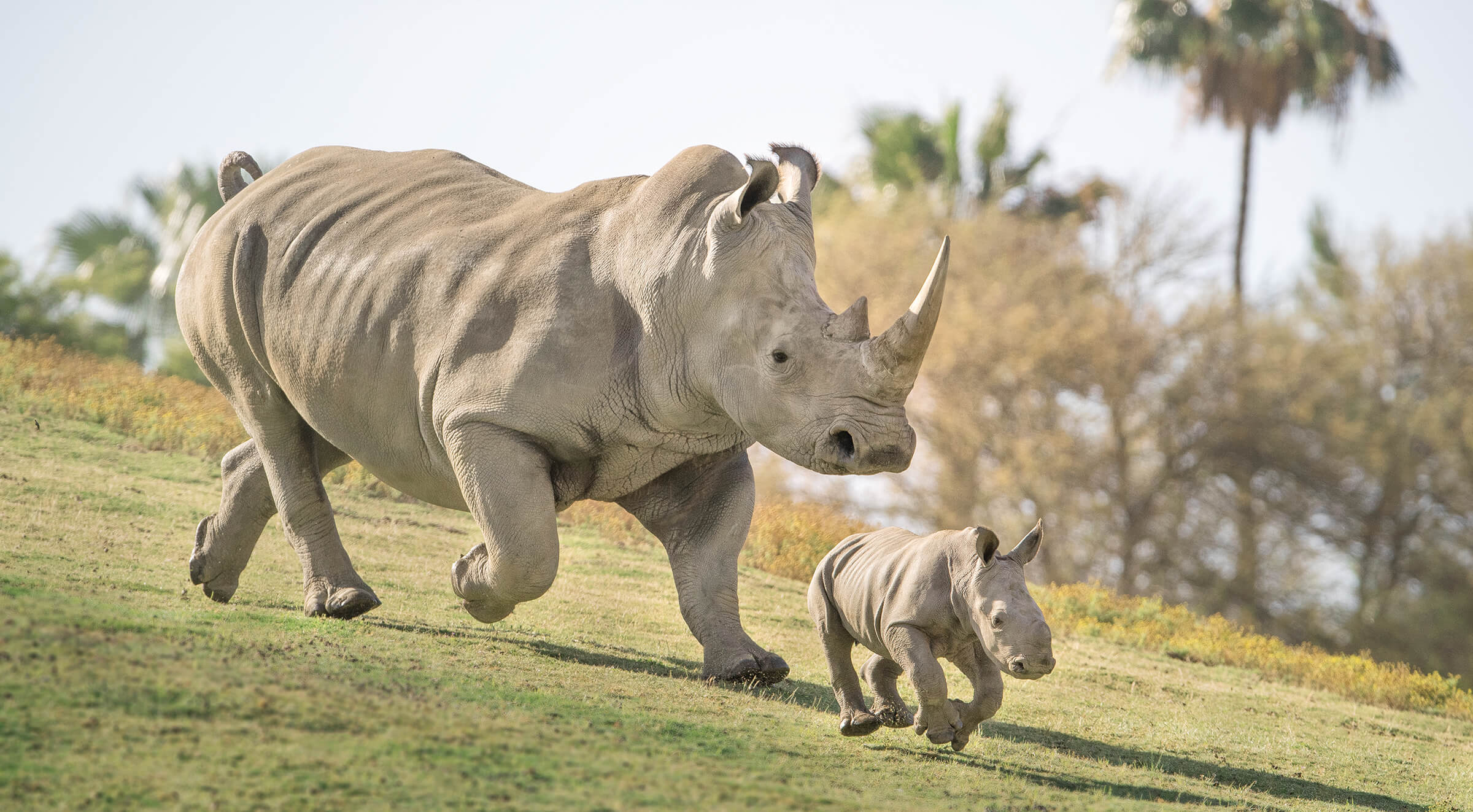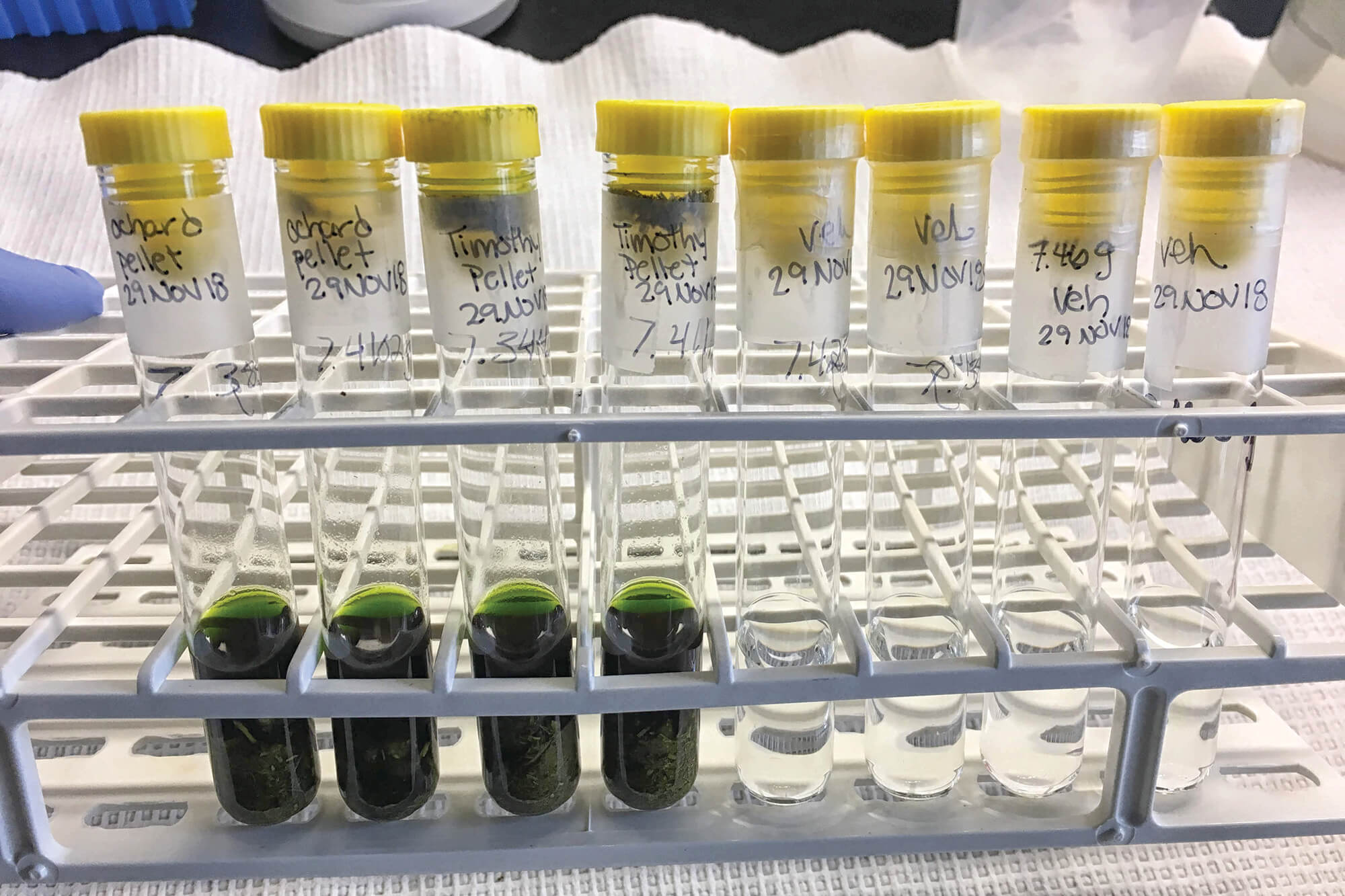Solving endocrinology puzzles to help endangered species
BY Christopher Tubbs and Rachel Felton
Photography by Ken Bohn
In the field of endocrinology, measuring hormones can tell us a lot about wildlife. Hormones, in some way or another, are involved in the regulation or control of nearly all biological processes. A single species can produce hundreds, if not thousands, of different hormones, and most of them remain largely unstudied in wildlife species.
Hormones do many things. They are critical players in the control of growth and in an organism’s metabolism. In addition, species that begin life in one form and change into another, like a tadpole that changes into a frog, owe this metamorphosis to hormones, which are instrumental in the process.
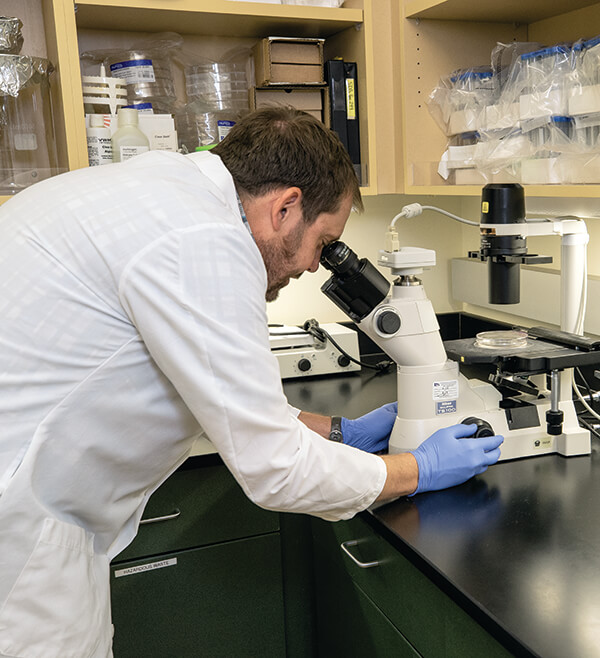
FOCUSING ON THE DETAILS
Christopher Tubbs examines cells treated with EDCs to determine the possible effects.
Hormones are essential to reproduction, and males and females produce different types and levels of hormones. What specific hormones do in different species can also vary. For example, in many mammals, the hormone cortisol is released when an animal experiences stress—like a nearby predator—starting a process to generate enough energy to avoid the stressful situation. In fish, cortisol also controls the stress response; but in fish species that migrate between fresh and salt water, cortisol also helps them maintain proper salt and mineral balances in their bodies as they move between these environments. Same hormone, different purpose.
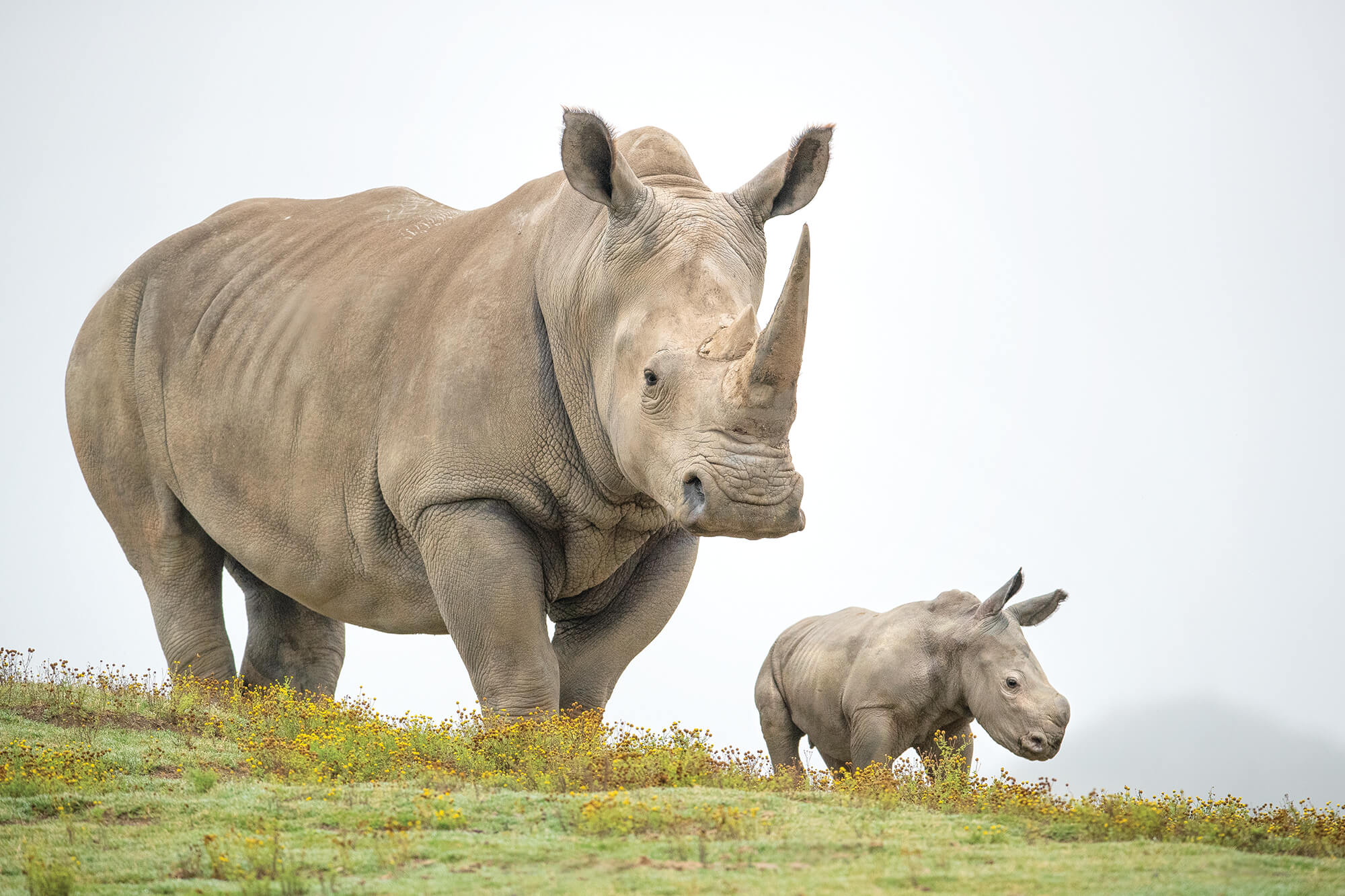
ANOTHER SUCCESS
Kiazi’s first calf, Ellen, was the second to be born after the new diet was implemented.
The Right Key for the Lock
As middle school or high school students, most of us were probably taught something like this: “Hormones are chemical messengers produced in one part of the body, and then travel through the bloodstream to other parts of the body, where they have an effect. Once they arrive, hormones bind to proteins called receptors. This relationship is like a lock and a key. A single type of hormone (the key) can only bind to its specific receptor (the lock). This ensures that particular hormones have very specific functions.” That’s a good overview of a critical aspect of hormone function. Without their biological accomplices, the hormone receptors, hormones are not capable of doing much at all.
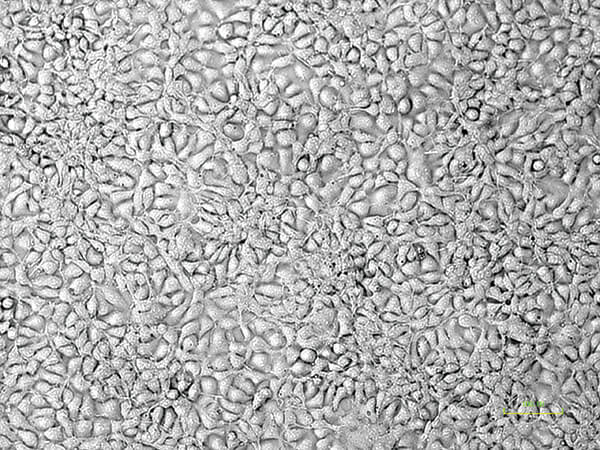
DESIGNER GENES
Genes encoding steroid receptors from endangered species are inserted into cells, which then make functional receptor proteins.
However, as is the often the case in biology, there are exceptions to the rule. In the case of hormone receptors, it turns out some of them can bind to a whole lot more than only their specific hormones, and, as it turns out, that can cause problems. It wasn’t until my sophomore year in college that I learned that there are many chemicals in the environment that can also interact with hormone receptors. When they do, the usually tightly controlled actions of hormones can be disrupted, and the biological consequences can be profound.
In the Endocrine Lab of the Reproductive Sciences group at the San Diego Zoo Institute for Conservation Research, we specialize in studying how environmental chemicals interact with hormone receptors and interfere with reproduction in wildlife. By studying hormone receptors and how they interact with environmental chemicals, we are using the knowledge gained to save species.
Hormone Imposters
Environmental chemicals other than hormones that interact with hormone receptors are called endocrine disrupting chemicals (EDCs). EDCs have been studied for decades, and research has shown that they can bind to a receptor and prevent it from working properly. They can also activate a receptor when the hormone is not present, kicking into motion physiological processes at inappropriate times. Given all the processes that hormones control, the mixed signals caused by EDCs can be wide-ranging and highly variable in their severity.
Our team is interested in the impacts EDCs can have on reproduction in threatened and endangered species. However, studying these types of questions in species for which there are few individuals, and limited sampling opportunities, can be challenging. To circumvent these challenges, we take advantage of the critical role hormone receptors play in EDC function to identify potential EDCs and predict what effects they may have on a particular species.
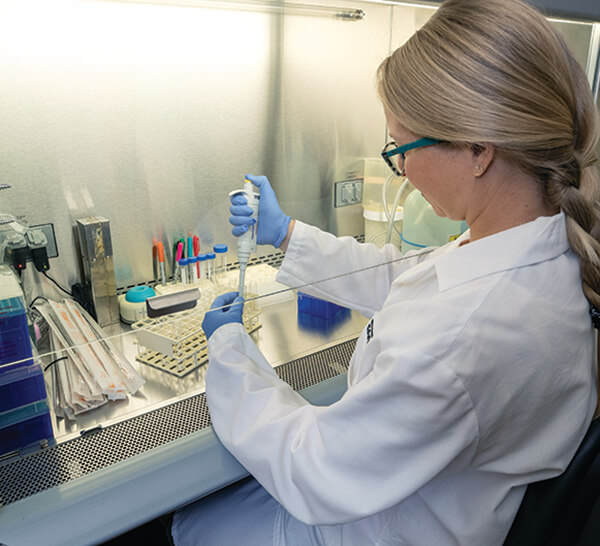
INTENSIVE CELL TREATMENT
Rachel Felton prepares to treat cells with suspected endocrine disrupting chemicals (EDCs).
Each of our projects, for the most part, resides in the laboratory. Surrounded by test tubes, cells growing in culture, and pipettors, we isolate the genes that encode the hormone receptors from small tissue samples collected from the species we study. We then place those genes inside cells that make the actual receptor proteins. Once the receptor proteins are made by the cells, we treat them with suspected EDCs and measure the interaction between the two, which gives us a clue about their potential to cause reproductive harm. It may seem far-fetched to think that what we measure in test tubes in the lab can predict how an EDC might affect a complex, living organism. However, we have successfully employed this approach to study the effects of EDCs on a number of species.
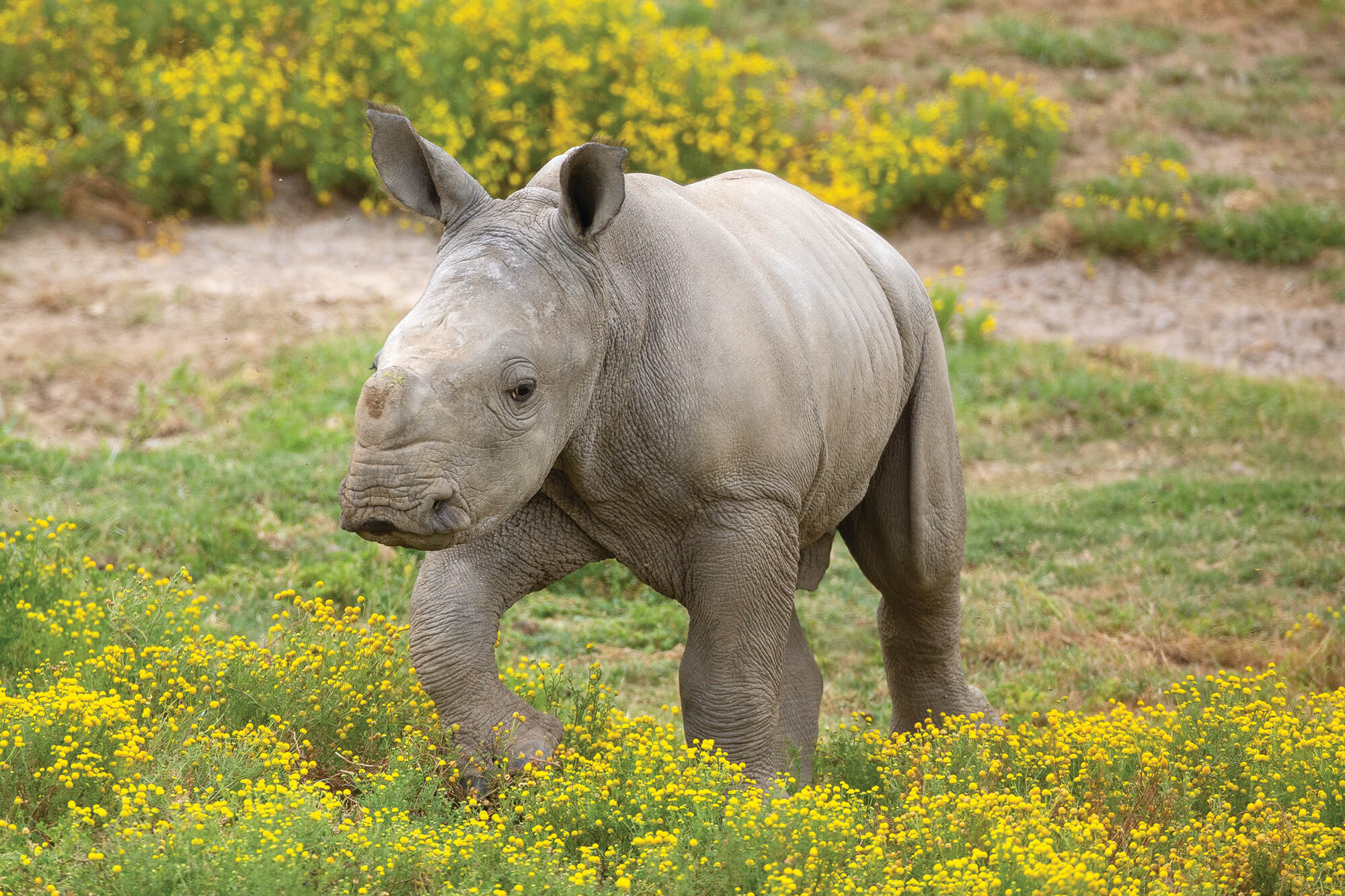
LIVING, BREATHING RESULTS
Masamba was the first southern white rhino calf born after the new diet was given to the adults.
Results for Rhinos
Our first foray into this approach focused on how natural, plant-produced chemicals called phytoestrogens affect reproduction in white rhinos. Our initial studies showed that phytoestrogens were very good at interacting with white rhino estrogen receptors to mimic the hormone estrogen. We hypothesized that this might explain why female white rhinos that consume high phytoestrogen diets struggle to reproduce—the phytoestrogens were preventing estrogen from working properly in the rhinos’ reproductive cycle. Working with our wildlife care colleagues and nutritionists at the Safari Park, we changed the diet for these animals and provided lower-phytoestrogen plant foods instead.
Because a rhino pregnancy lasts for 16 months, it took a while before we could find out if this change would, in fact, make a difference. The anticipation made it even more exciting when the Safari Park had two successful southern white rhino births from females that had previously failed to reproduce: Masamba, born to mother Holly on April 2, 2016; and Ellen, born to mother Kiazi on April 30, 2017. And the trend continues—more births are expected.
This success with our rhino work has paved the way for us to conduct similar studies in other species, including California condors, looking at chemicals they consume while feeding on marine mammal carcasses, and big cats, looking at the phytoestrogens they accumulate in their system through consuming their prey. There is much yet to discover!

